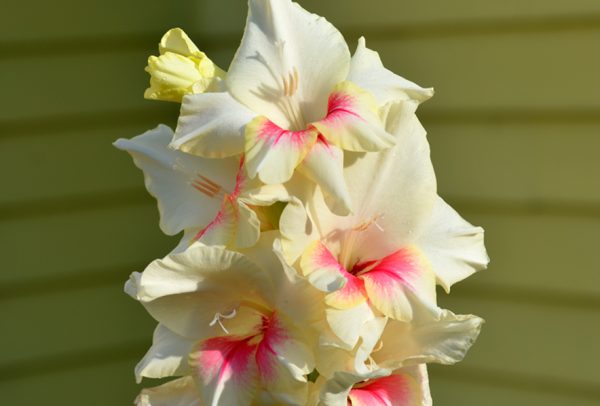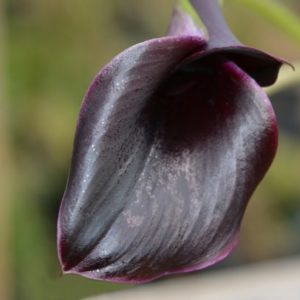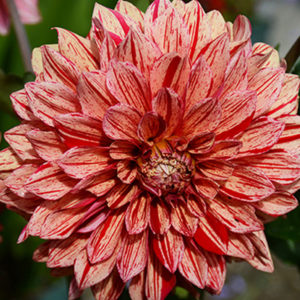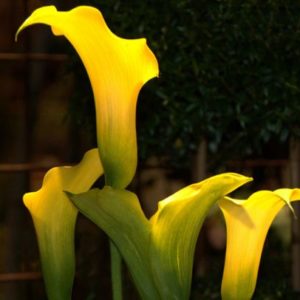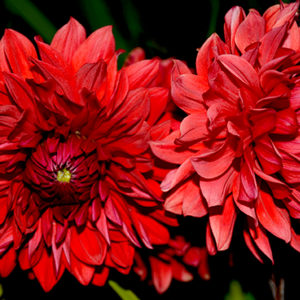Description
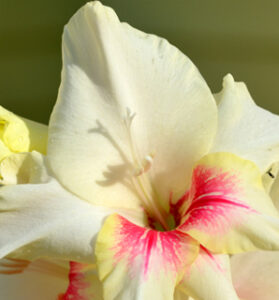 Standard Gladiola,
Standard Gladiola,
Fiorentina
Few flowers provide the opulence, color range and length of bloom time that the gladiolas do. The name, gladiolus,comes from the Latin word, gladius, which means sword and refers to the shape of the plant’s leaves. Today’s hybrids, almost exclusively, come from species gladioli native to South Africa and the surrounding regions, but there are varieties of gladioli that are native to Southern Europe and the Mediterranean area, and there is one very rare variety, G.illyricus, that is native to Great Britain.
Of all the gladioli, from the various regions and climates, G. dalenii, is the most important. It is native to Zimbabwe, specifically the area around Victoria Falls, and was introduced into Great Britain in 1904. It is the plant from which most of today’s cultivars were developed.
Gladioli grew in popularity throughout the 19th century and became a much beloved cut flower and an essential part of the Victorian cutting garden. It was so much appreciated by gardeners and homemakers, that it was used everywhere. In fact, it became the flower of choice in most funeral floral displays. Sadly, this popularity in funereal bouquets had a tremendously negative effect. Over the years, gardeners began to associate gladioli with death. Instead of bringing joy into the hearts and minds of all who observed the incredible blossoms, the sight of gladiola flowers created great sadness because people associated them with death and the loss of loved ones.
For nearly a century, gladiolas disappeared from the world’s cutting gardens. Then, in the 1980s, gladiolas began to increase in popularity. This change in regard to gladiolas was the result of a change in the cultural traditions associated with funerals. Once it became the tradition to donate to charity in the name of the deceased rather than purchase flowers for the funeral, gladioli disappeared from funerals. It took nearly two generations, but eventually humanity no longer associated the flower with death. By the 1980s enough years had passed and gardeners had, once again, fallen in love with this incredible plant. They began to include gladiolus in their gardens.
Planting Gladiolas in Your Garden
The most important fact that must be remembered when cultivating gladiolus is that they cannot stand wet feet. They need well drained soil, and if they do not have this, they will rot quickly.
To plant gladiolus in the ground, dig trenches that are 8-10 inches deep and dust the holes with bone meal. Place the corms in the trenches, pointed side up with 3-4 inches between corms, and fill the trench with soil. Gladiolus prefer organically rich soil, so mixing peat moss, compost, and/or dehydrated cow manure into the soil produces stronger plants and more flowers.
Once the gladiolus have emerged from the soil, you can fertilize with a blossom booster fertilizer, but you do not have to do this. You will still get beautiful blooms if you do not fertilize at all. For longest lasting floral creations, cut the blossom stem as the very first blooms begin to open.
If you decide to bring your glads inside for the winter, dig them up with their leaves and flower stems still attached. Place in an area where they can be dried out, but will not freeze. Store in a cool dark area.
Planting Gladiolas in Containers
Glads are easy to grow in containers, but the containers must be deep – at least 10-12 inches. Use the soil mix described in detail in our Harvesting History YouTube video. Do not use prepared soil mixes.
Harvesting History has a collection of YouTube videos on Asiatic and Oriental Lilies. Click on the individual link to view each video.
Gladiolas – Part I – Introduction to Gladiolas
Gladiolas – Part IA – Introduction to Gladiolas Continued
Gladiolas – Part II – The 2022 Harvesting History Gladiolus Collection
Gladiolas – Part III – The 2022 Harvesting History Gladiolus Collection
Gladiolas – Part IV – The Cold Hardy Gladiolas
Gladiolas – Part IVA – The Cold Hardy Gladiolas History
Planting Gladiolas in Containers and in the Ground

